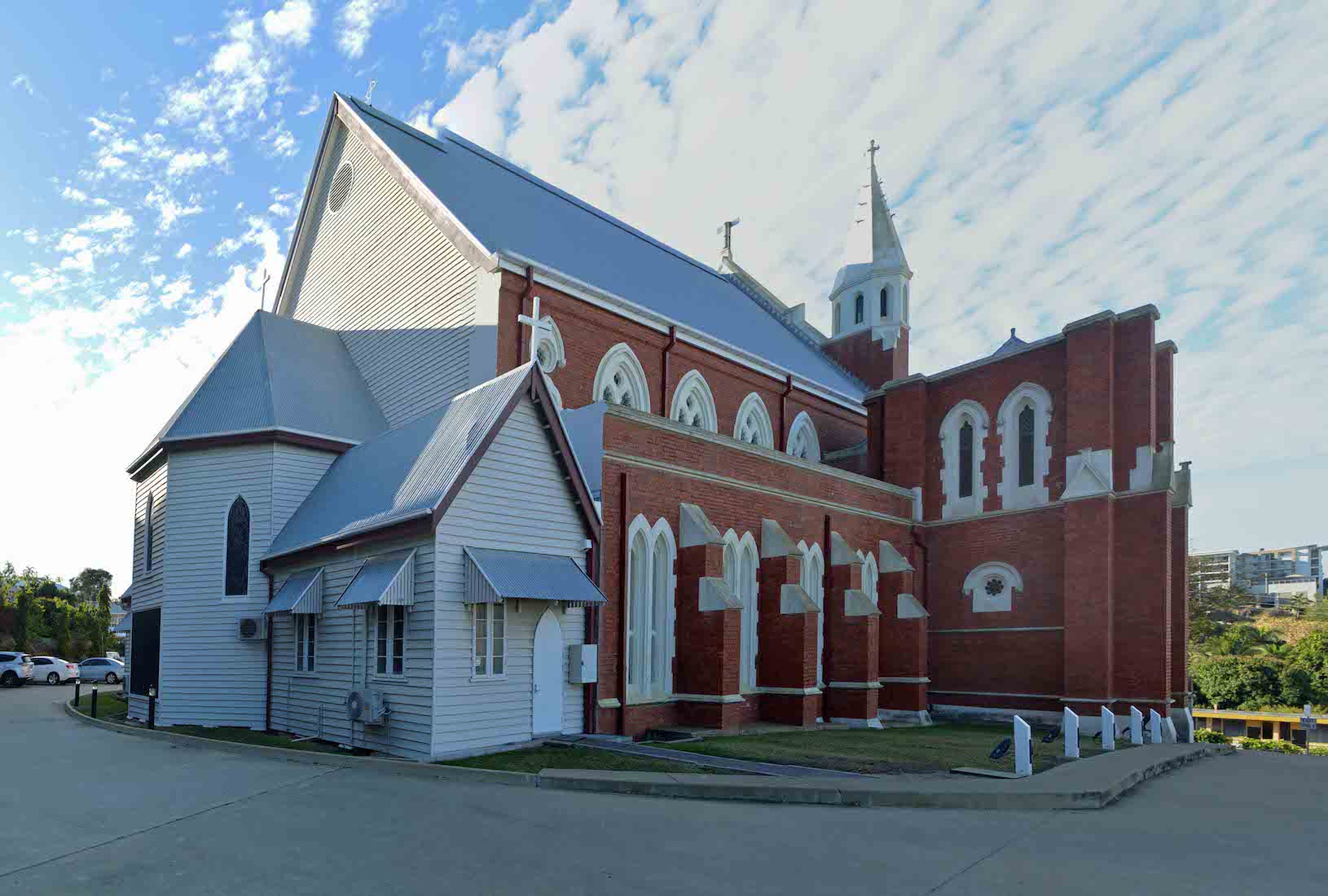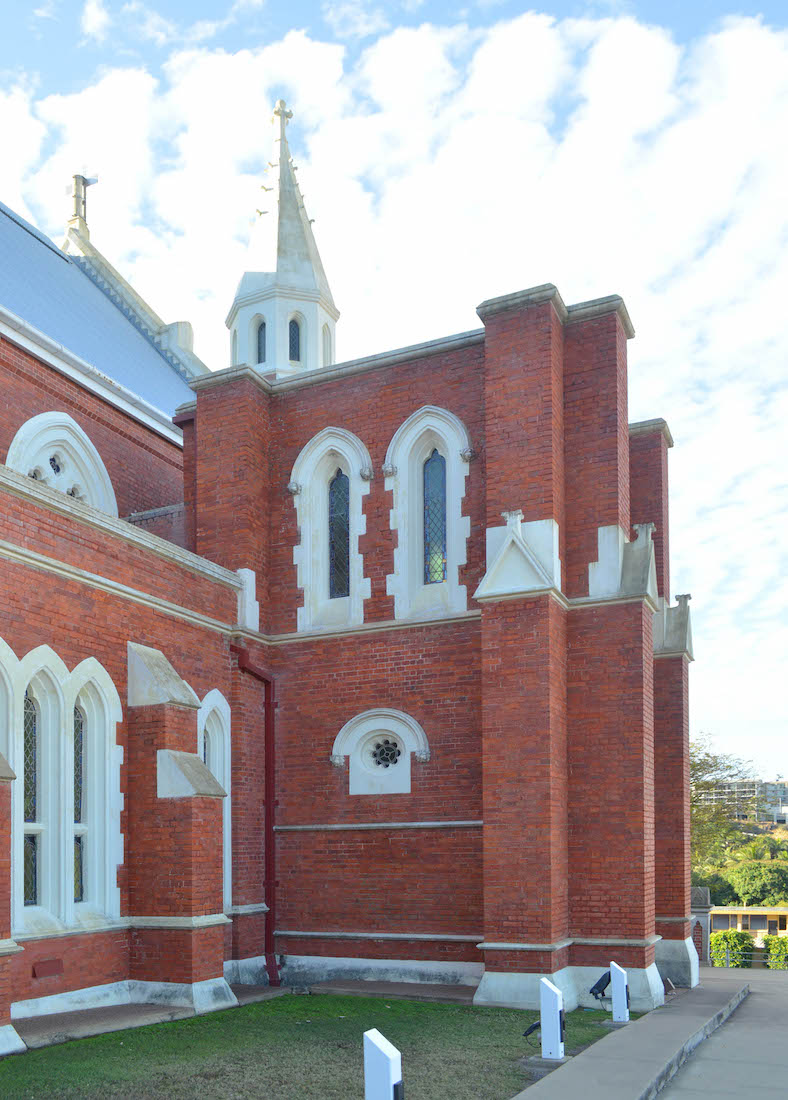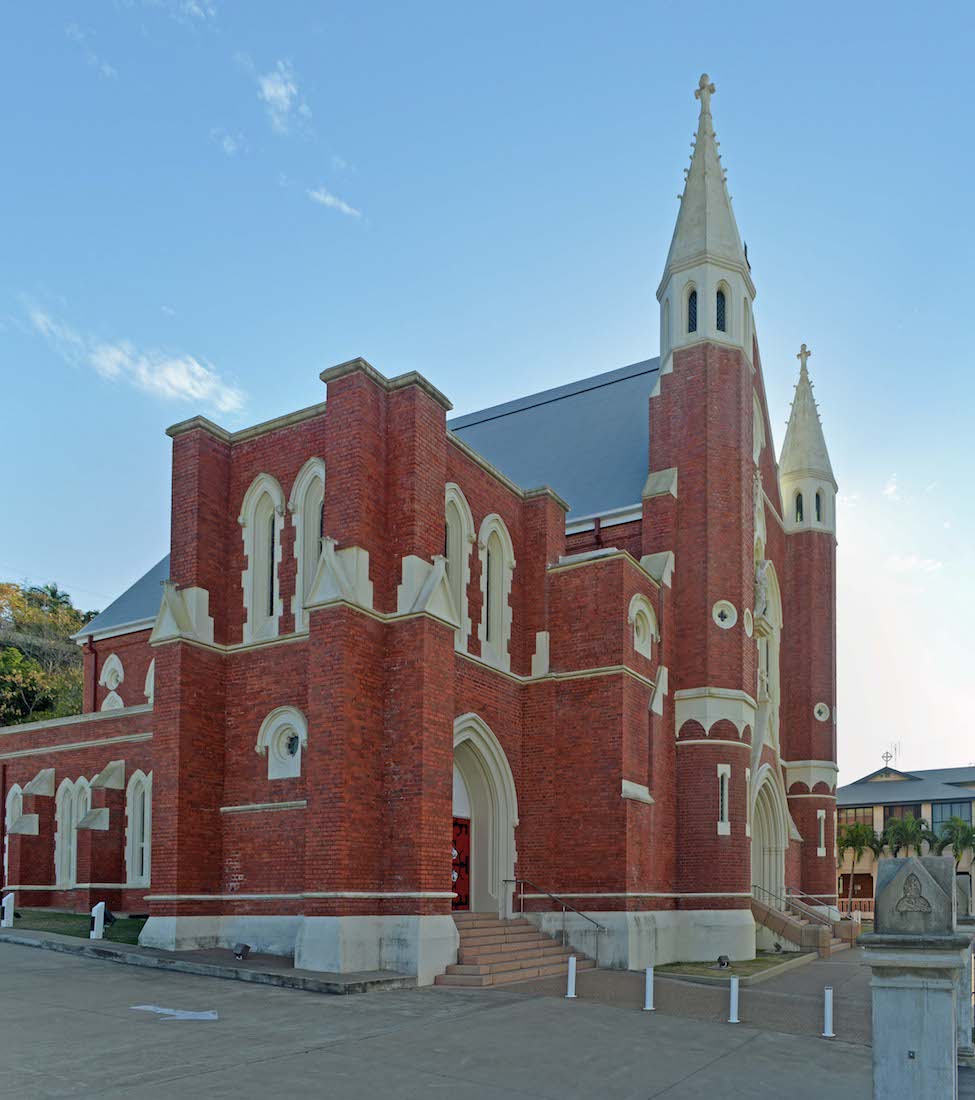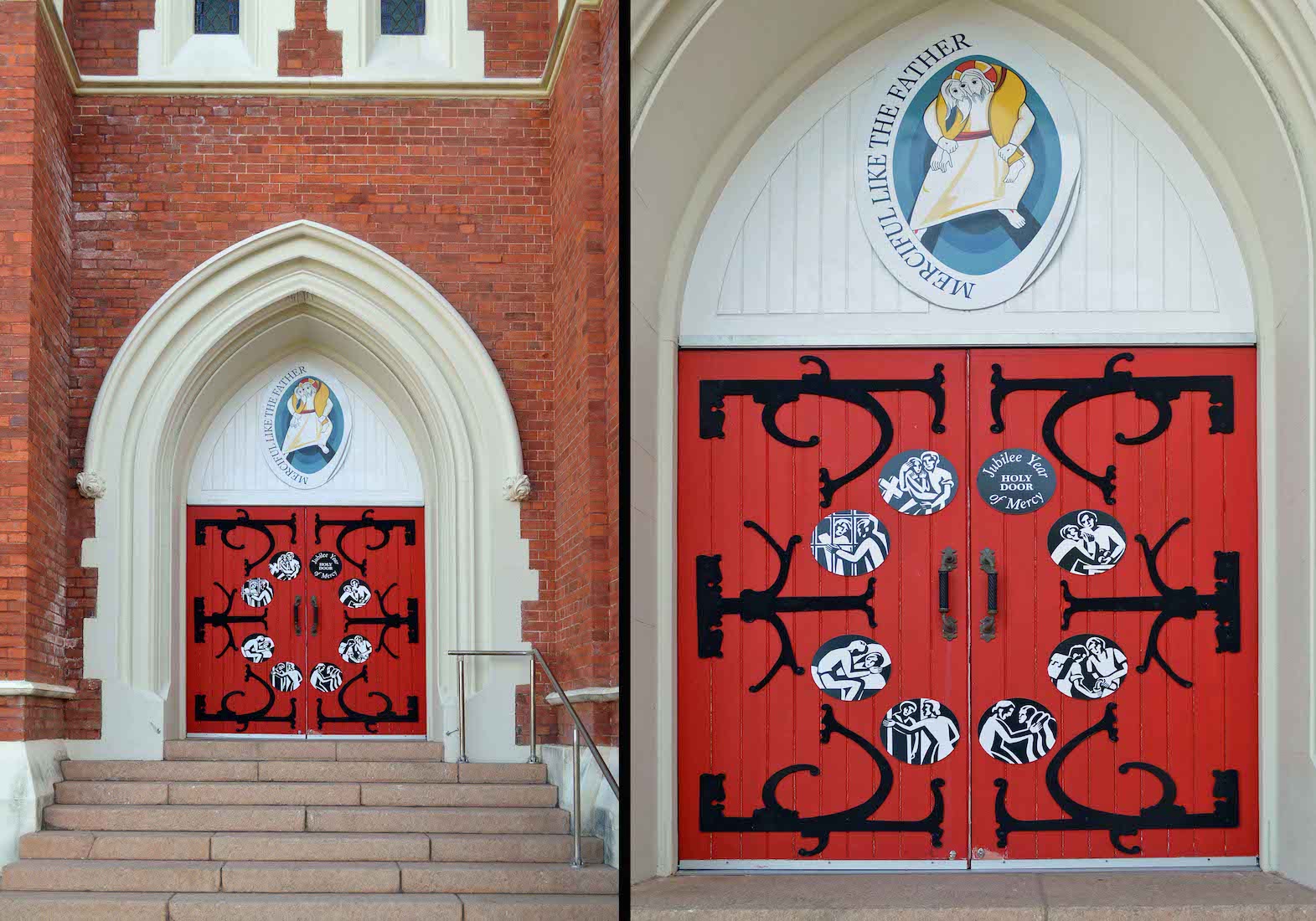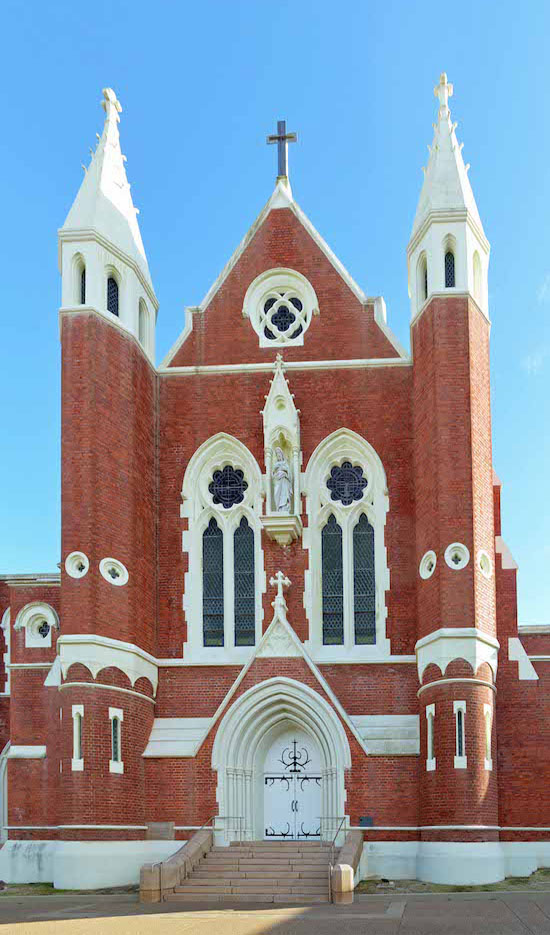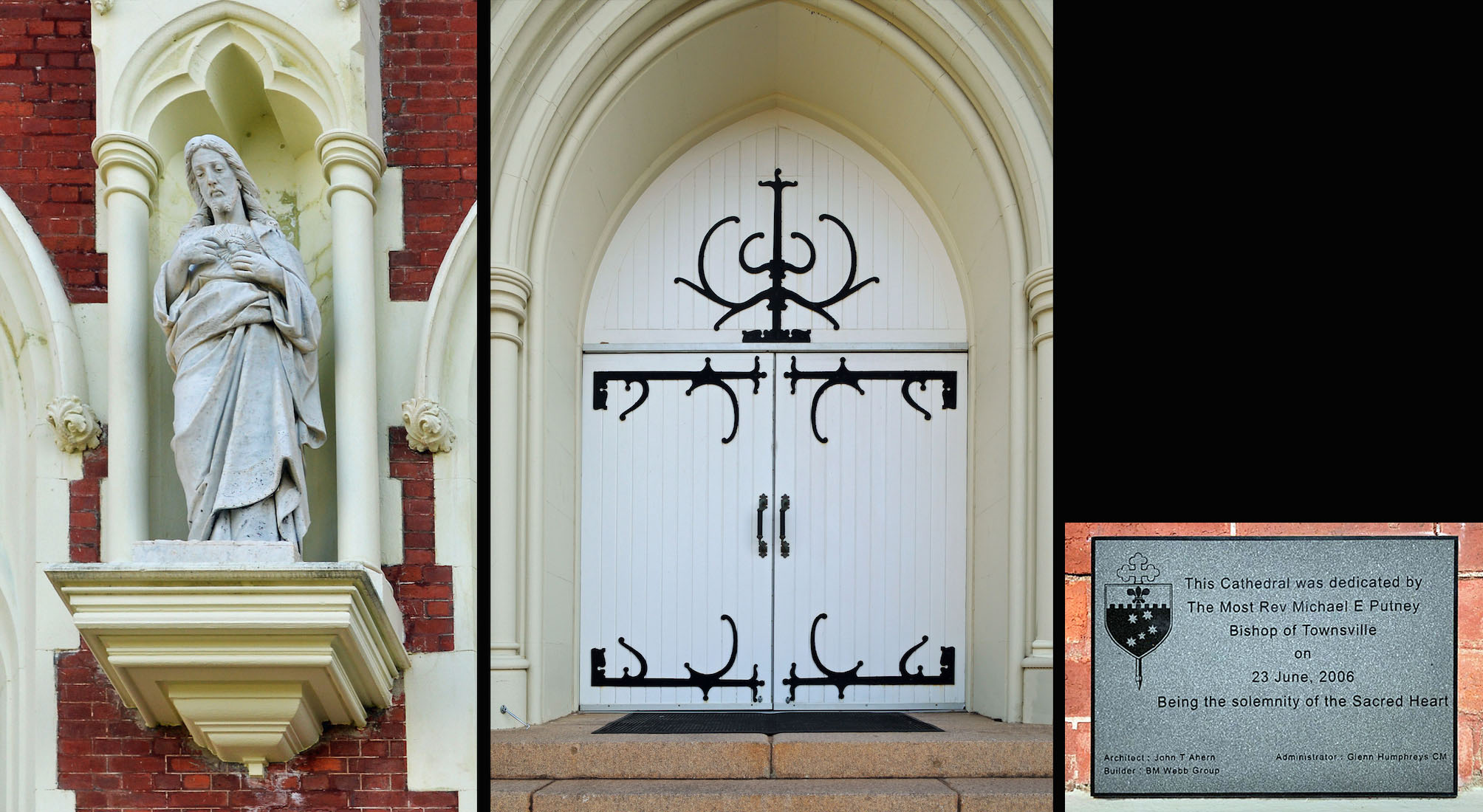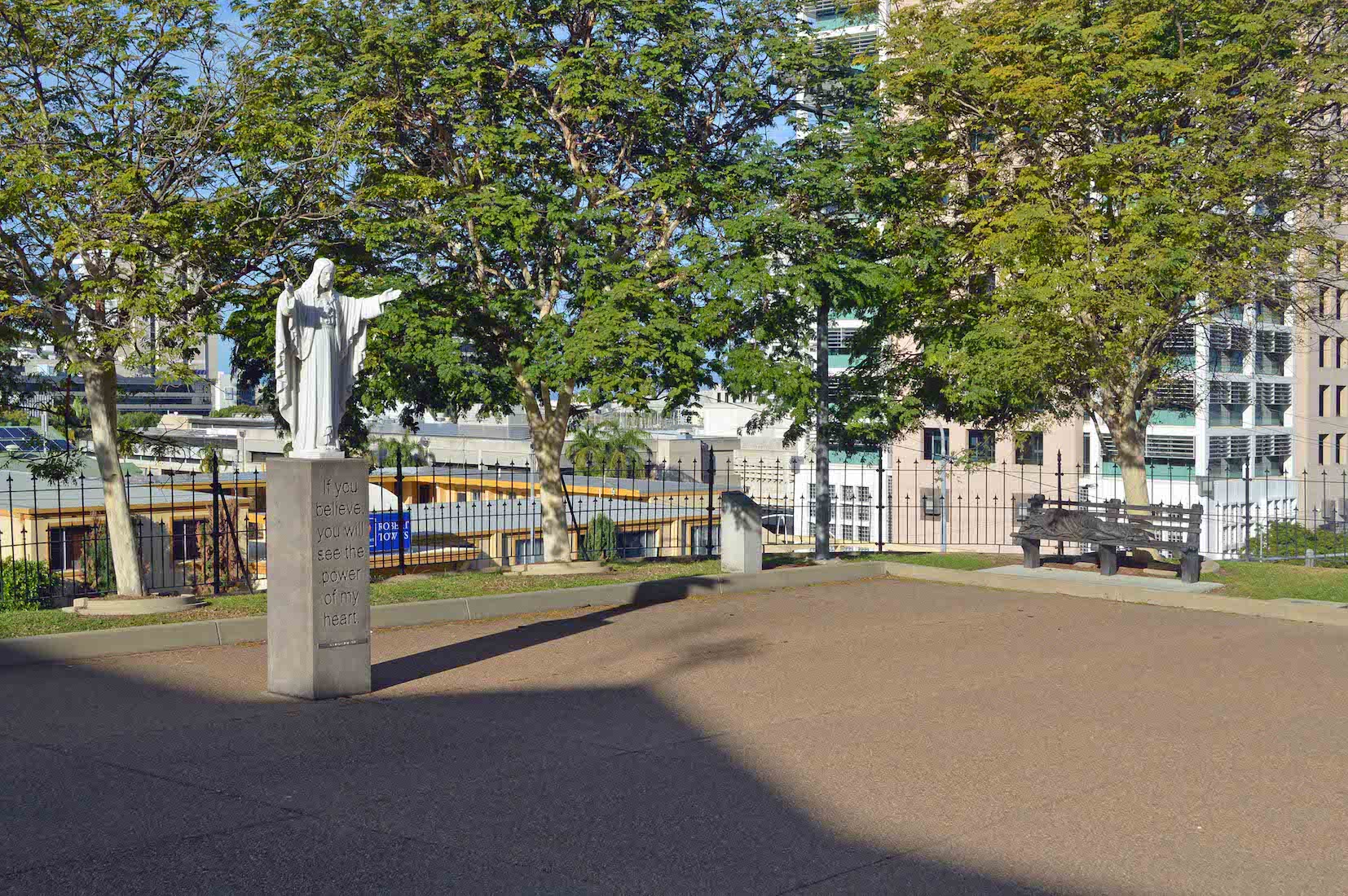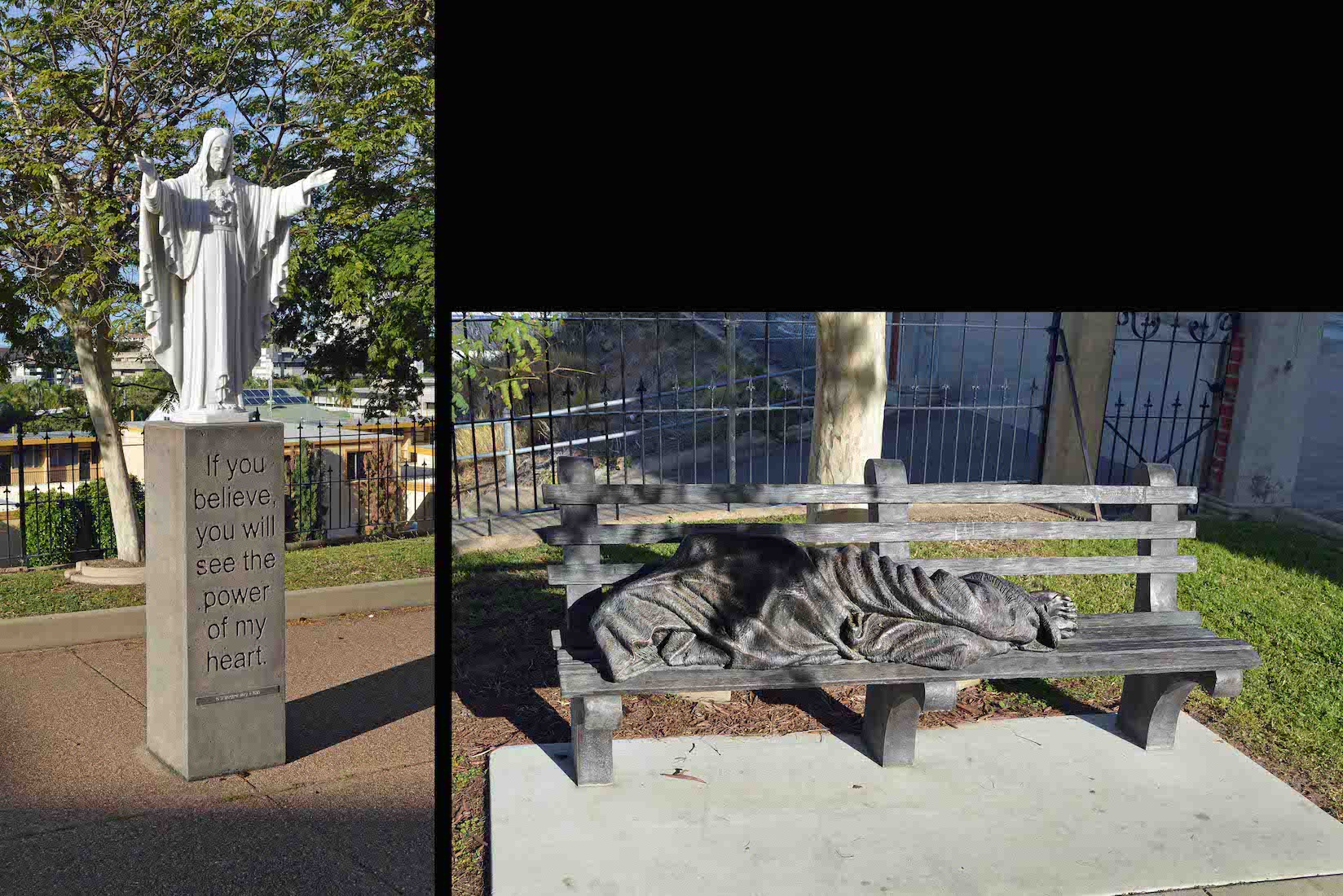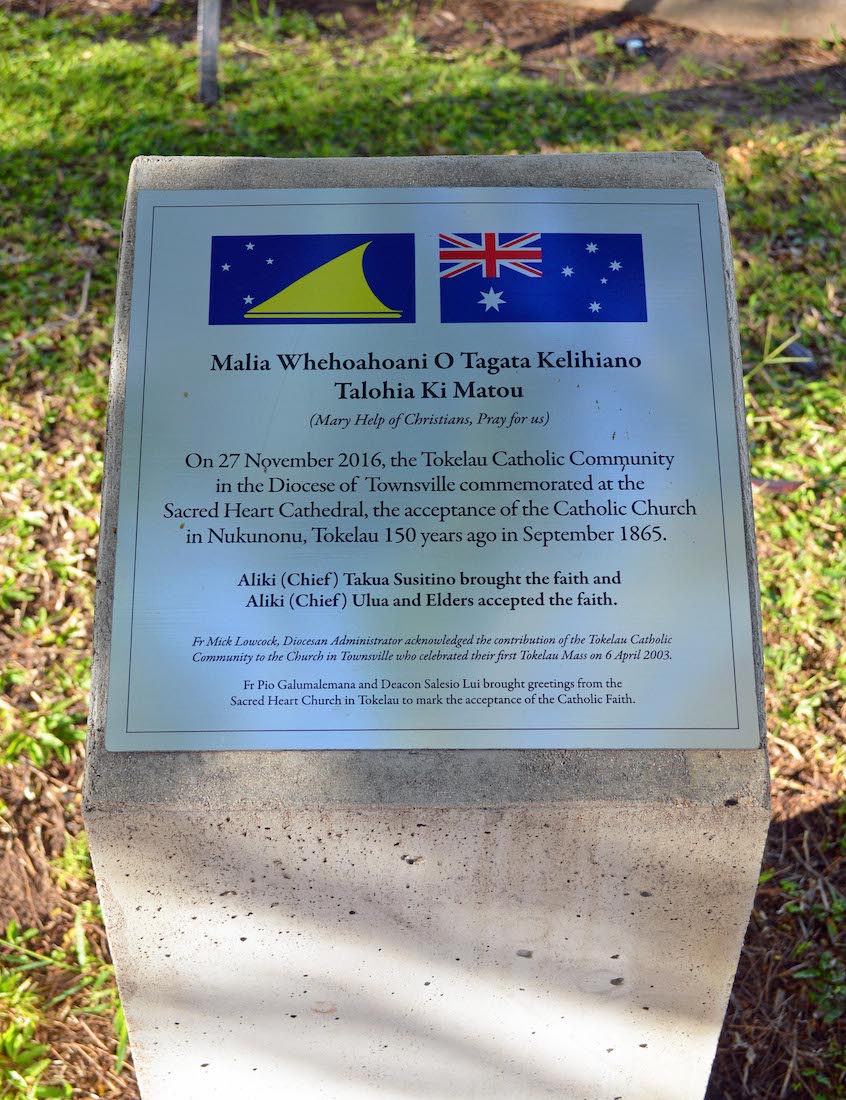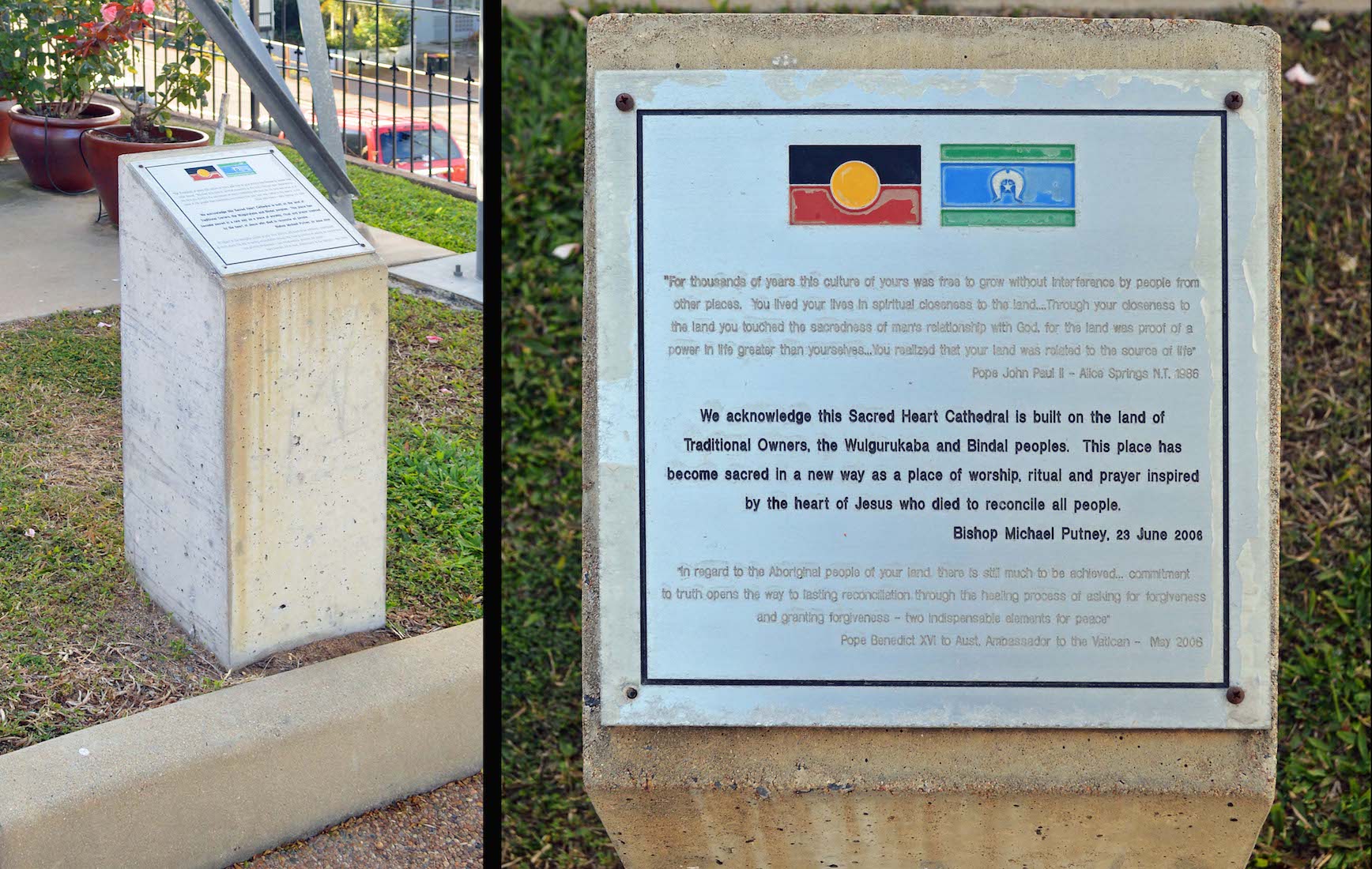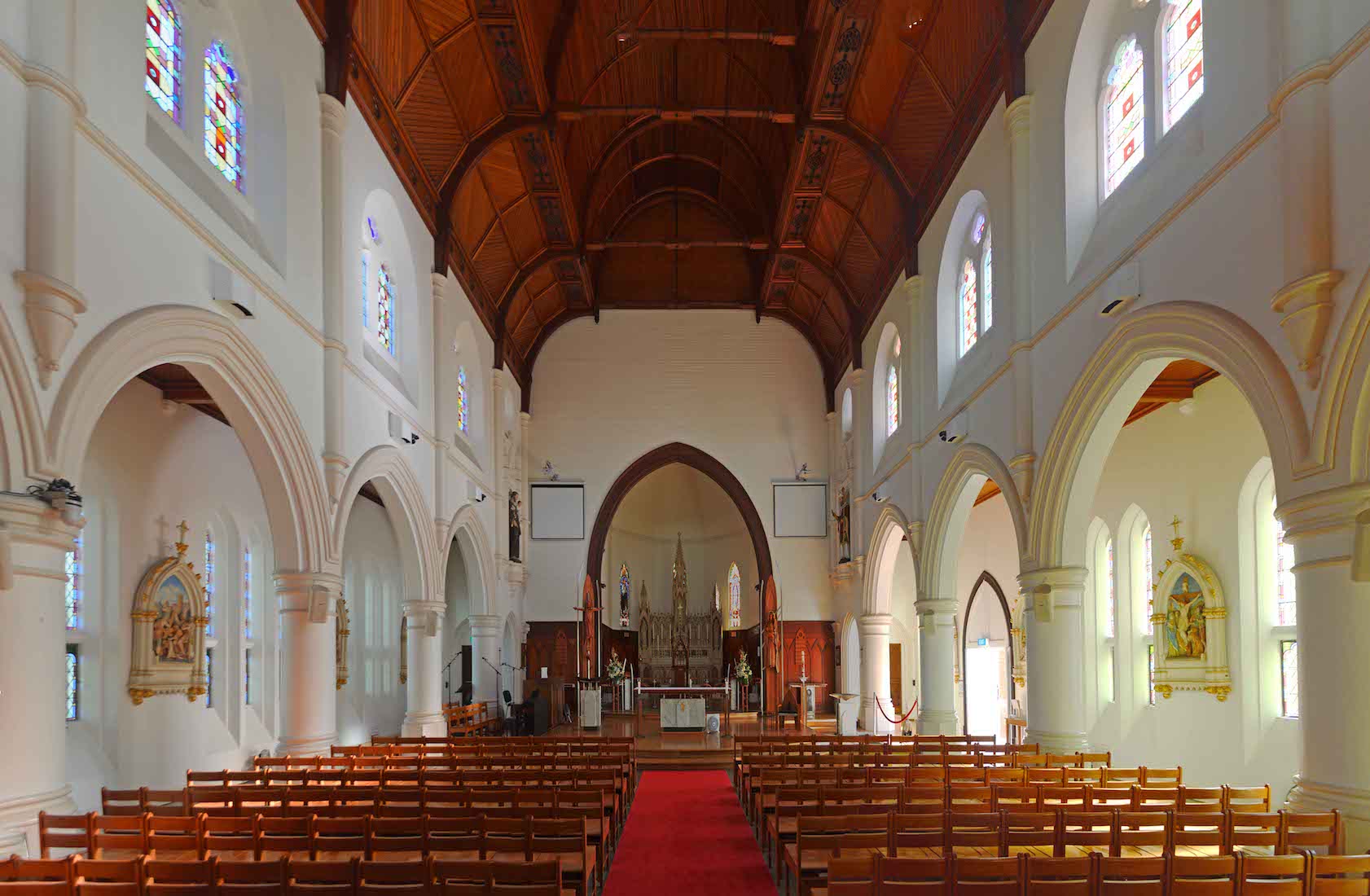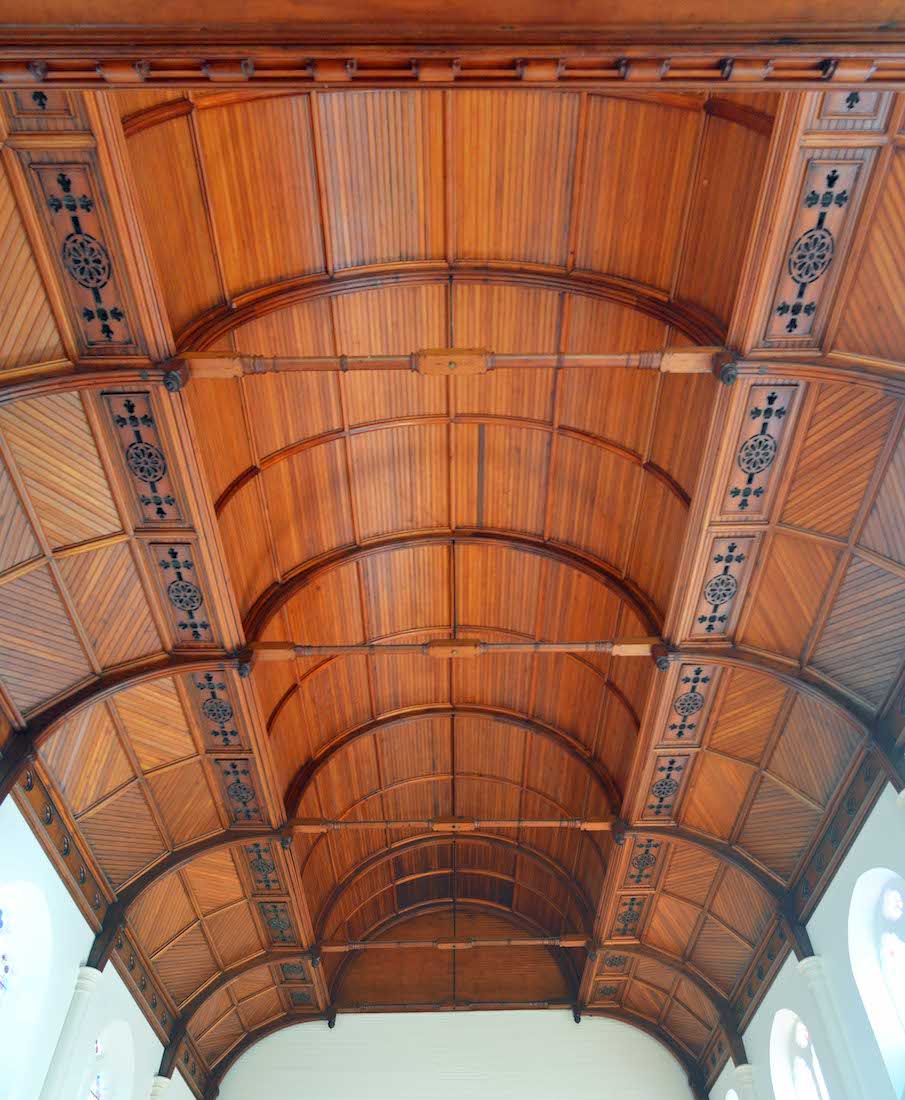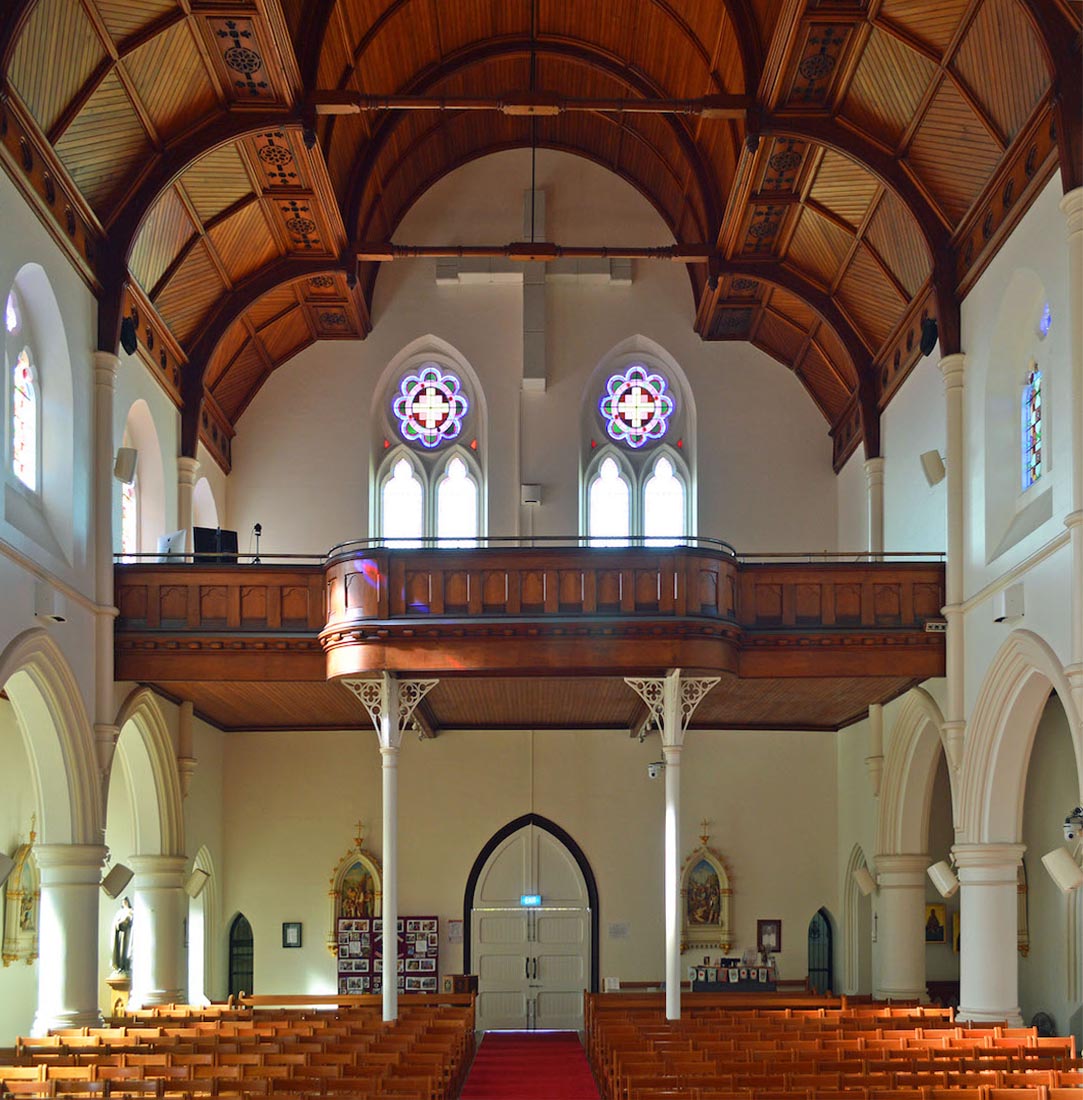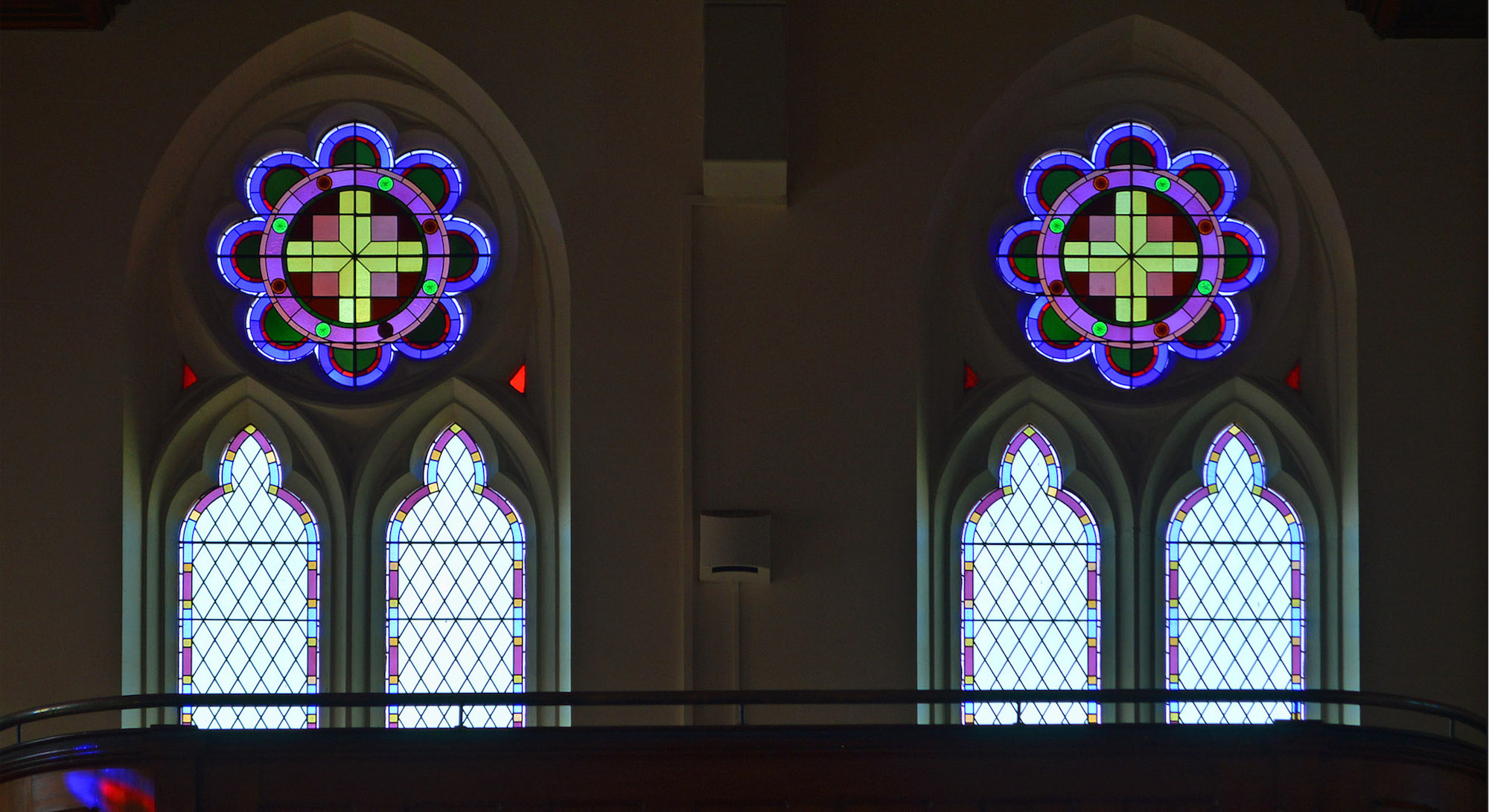
Sacred Heart Cathedral is a heritage-listed Roman Catholic cathedral in Stanley Street, Townsville, Queensland. It was built from 1896 to 1902 by Dennis Kelleher. It was added to the Queensland Heritage Register on 21 October 1992. It stands on a rather steep site overlooking the city. We shall begin our tour of this Cathedral at the front West face, and walk around the building in an anticlockwise direction. We notice the regular brick buttresses along the sides. INDEX
2. SOUTHEAST VIEW
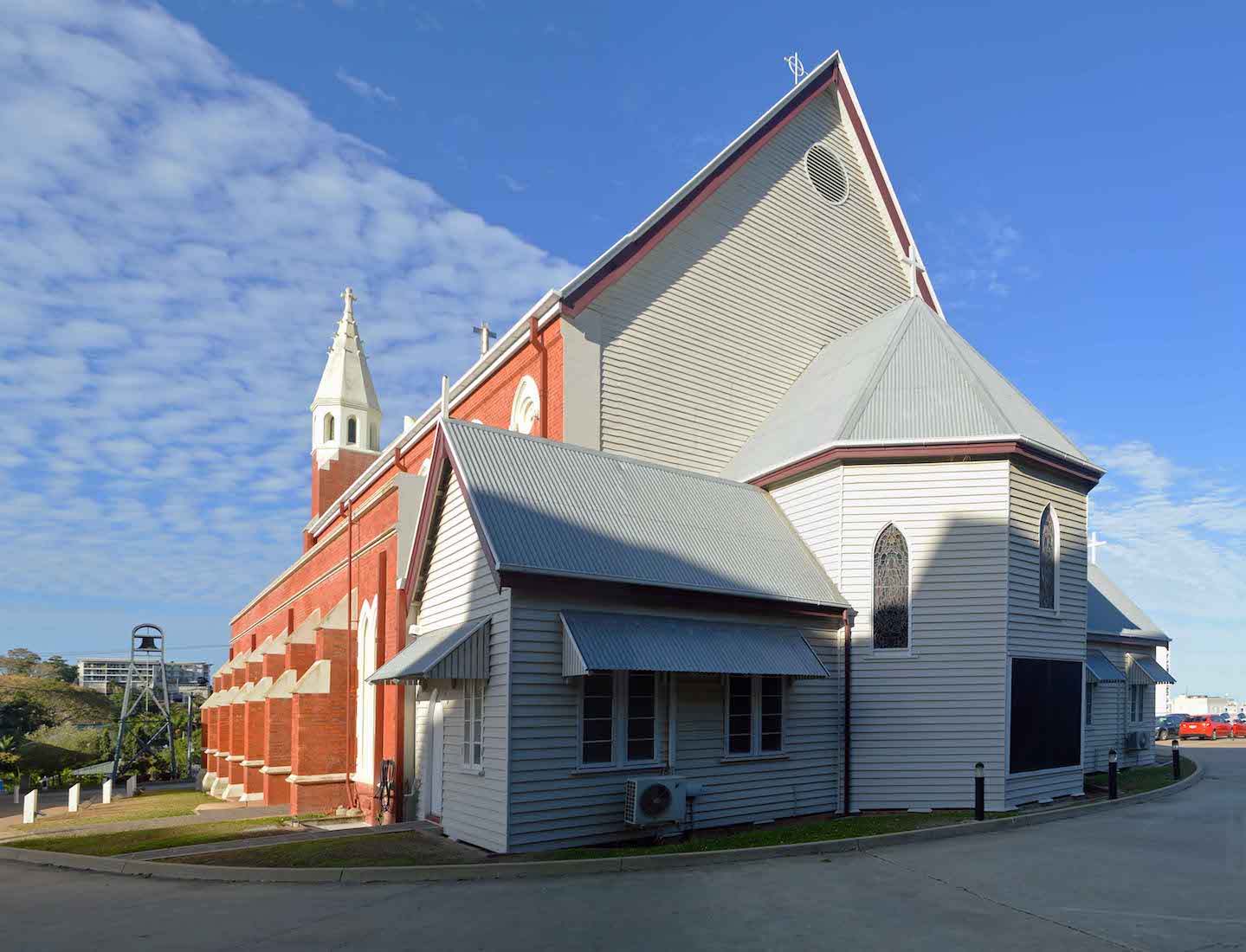
The Gothic brick building with white facings is of a design common to the time of its construction, but the rear has a distinctly unfinished look. A planned rear section and tower were never built.
3. NORTHEAST VIEW
We continue our circuit to the North side. It is hard to escape the unfinished appearance from this angle, but the light-frame constructed apse and mini-transepts at the rear are not displeasing.
4. BASE OF BELL TOWER
At the Northwest corner, a large square construction suggests preparation for a bell tower. Great plans were thwarted by an unexpected cyclone. In fact the cathedral has been constructed on a rather exposed site.
5. NORTHWEST VIEW
The original plans were for a substantial brick building of Gothic style, comprising a large basement space, a superstructure consisting of nave, aisles, transept, sacristy, chapters and sanctuary, and an imposing front tower and spire rising 162 feet (49 m).
6. TOWER DOOR
The tower has a door of interesting design. Eight ovals have been affixed to the red door with the theme ‘Jubilee Year of Mercy’. This was a Roman Catholic period of prayer held from 8 December 2015, the Feast of the Immaculate Conception, to 20 November 2016, the Feast of Christ the King.
7. WEST WALL
Having completed our circuit we stand back to admire the imposing West wall. The design is very attractive, with the white panels contrasting against the dark brick.
8. WEST ENTRY
Two features of the West wall are the statue of the Sacred Heart, and black and white West doors. The small dedication plaque is to the right of the doors. ••• From the history ... . Little more than three months after the November opening, the Church of the Sacred Heart was severely damaged by Cyclone Leonta, which struck Townsville on 3 March 1903. The building was unroofed (over two tons of iron sheeting) and substantial water damage to the interior resulted. The damage was repaired, but the original plan to build a bell-tower and extend the transept back towards Castle Hill in order to create a chapel behind the altar, was never carried out. Later a steel bell tower was erected.
9. SOUTHWEST CORNER VIEW
A final view of the façade. This is a fine Gothic structure. We take a look at the surrounds before going inside.
10. NORTHWEST CHURCHYARD
The short steep driveway up from Stanley Street leads to a generous flat paved area around the Cathedral. In this view we note the short column bearing the figure of the Sacred Heart, a short pillar, and a homeless figure on a park bench.
11. SACRED HEART AND HOMELESS FIGURE
The column bearing the Christ figure has the text: ‘If you believe you will see the power of my heart’. These words are said to be Jesus’ words revealed to St Margaret Mary Alacoque, a French nun who popularized the doctrine of the Sacred Heart. The homeless figure on the park bench, known as ‘Homeless Jesus’ or ‘Jesus the Homeless’, is a bronze sculpture by Canadian sculptor Timothy Schmalz. There are some 100 copies worldwide: for example there is one in Manchester in front of St Ann’s Church.
12. PILLAR
Near the homeless figure stands a pillar with these images and text. Shown are the flags of Tokelau and Australia, and words which celebrate the acceptance of the Catholic Church in Nukunonu, Tokelau 150 years previously in 1865.
13. BELL TOWER
If a steel bell tower was removed in the 1970s, it is unclear where this steel bell tower came from. It appears to be a temporary structure.
14. ABORIGINAL PILLAR
At the foot of the metal bell tower stands another pillar, this one with flags and text relating to the Aboriginal people. Shown here are the Aboriginal flag and the flag of the Torres Strait Islanders. The text acknowledges that the Sacred Heart Cathedral is built on the land of the Traditional Owners, the Wulgurukaba and Brindal peoples.
15. NAVE
We enter the Cathedral through the open Southeastern door, and make our way to the back of the nave. Two rows of Gothic arches separate the nave seating from narrow side aisles. High clerestory windows and side windows have a common abstract design which is pleasing and lets in ample light. Stations of the Cross line the side walls. The central aisle leads down to a nave altar, behind which is an arch leading to an apse with a high altar. This is a peaceful, prayerful place of worship.
16. NAVE ROOF
There is a high ceiling above the nave which is framed by a timber arch lined with tongue and groove timber. The tunnel-vault with truss design ceiling is of tongue and groove board. The result is spectacular.
17. WEST NAVE
The back wall of the nave is divided horizontally by the substantial balcony with its two column supports. Above is a central cross against the wall, and two windows with clear lancets but decorated roses at the top. Below is the central West door, and two small grilled doors leading to the front round towers. Where the two side aisles meet the back wall there is a statue at left, and some icons at right.
18. WEST WINDOWS
The two round windows are identical with a central cross surrounded by a circle, and a border of eight small semicircles. The lancet windows beneath have clear glass in a criss-cross lattice with a pale coloured linear border.
19. ST TERESA AND DECLARATION
In the Southwest corner stands a statue – recognizably St Teresa, even from here – and on the adjacent wall is some sort of declaration. There is a font in the foreground. The declaration is entitled: Faith in Action through Communion in Christ, and is a statement of the desire of the Diocese of Townsville and the Archdiocese of Port Moresby (Papua New Guinea) to strengthen bonds of mutual charity and cooperation.
20. ST TERESA
Saint Teresa of Ávila (1515–1582) was a Spanish mystic, writer and reformer of the Carmelite order. She was an influential and pivotal figure of her generation. As a young child, Teresa showed signs of a deeply religious nature; she would often retreat into silence for prayer and would enjoy giving alms to the poor. She is the founder of the Discalced Carmelites. In 1970 she was declared a Doctor of the Church for her writing and teaching on prayer, one of two women to be honoured in this way.


